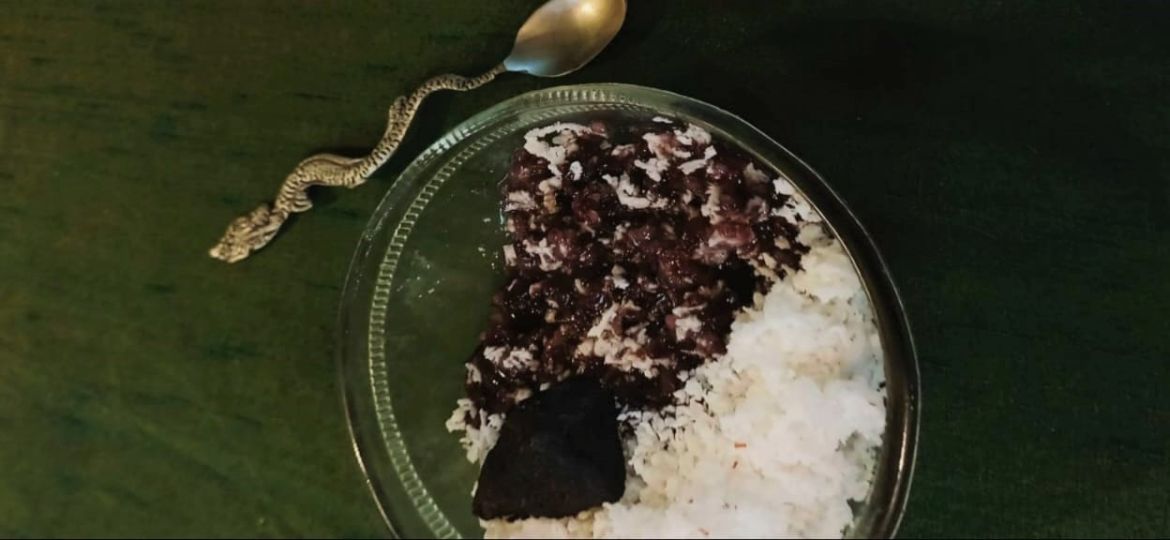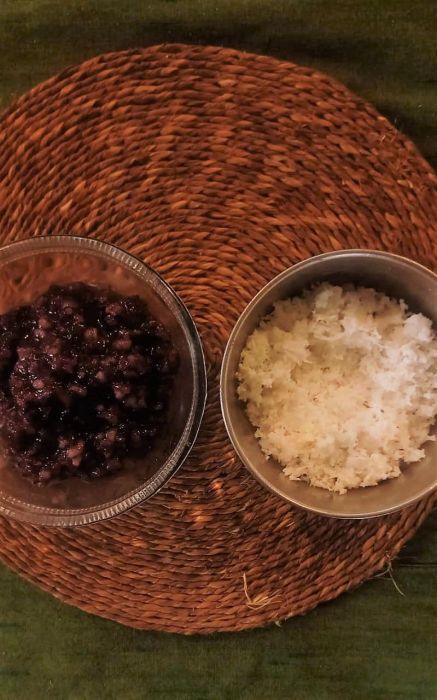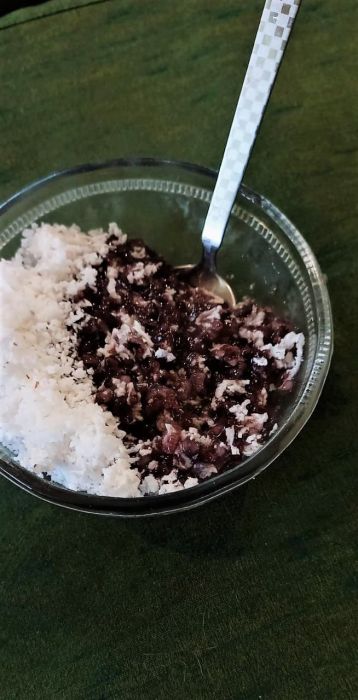
There are certain events in our lives that earmark a transition: events that are as simple as a flip of the hand but signal a movement beyond the linearity of clocks and calendars. The first period in a girl’s life, menarche, is one such event that is an embodied physical flip of time. Time transitions from clocks to the body, from the collective to the personal.
Most cultures have rituals around this event: girls in my class had brought pictures of themselves wearing saris, smeared in turmeric wearing gold chains that reached their narrow waists. They were mostly slipped into our hands during class with the hiss of, “Don’t show the boys.” I had seen my cousin, only a few months older than me bending her head over the Quran as a circle of aunts congratulated her mother.
By the time it was my turn, I was anxious to be included in that inner circle of girls who rushed to the bathroom with a secret sanitary napkin passed between them. Mercifully, there were no gold chains or uncomfortable netted skirts I needed to deck. After reading a prayer that was breathed into a bucket of water, which was then poured over my head three times, I was led with my eyes closed to my grandmother, who placed my hands on the Quran and asked me to read the opening lines.
From that day onwards, my education had begun. All food was divided into cooling and heating foods. It is believed that menstruation leads to a lot of heat being released in the body. All embarrassing signs of puberty such as acne, sweaty palms and hot flushes could be explained away by this idea of the build-up of heat in the body. Reducing ‘heating’ foods reduced these symptoms as well, and kept the body in balance resulting in a less painful menstrual cycle. Meat, coffee, ginger, papaya, and pineapple were all ‘heating’. These were to be eaten in small portions (avoidance was not a habit we were fluent in). Yoghurt, rice, Gulkand (rose petal jam, preferably made with raw sugar), and pomegranates were friends.
In the mornings, black rice (Pith ka chaawal in Dakhni or Karuppu Kavuni in Tamil) was steamed with fresh coconut and kneaded with jaggery. The reddish black rice had a distinct hard, earthy flavour that overcame even the sweetness of the jaggery. Sometimes, my mother would spoon a tablespoon of ghee over it, which she said strengthened the hips and lubricated the joints. Strong hips were synonymous with a strong body and the capacity to bear healthy children. And so it was that within these acts of love and care were woven the expectations from a menstruating woman.
To cool the body down, Gond (almond gum) was soaked in water the previous night. In the morning, the wrinkled hard pellets of gum had flowered into a translucent jelly that was stirred into milk with honey or jaggery. Dates (it was ordained to be the cure for all ailments) came in all shapes and sizes: the smallest, darkest ones came from the Middle East and were told to be from the trees that Prophet Muhammad had planted. There were long chewy ones from Rajasthan and chocolate brown dates sweet enough to stick to your throat from Tamil Nadu. Urad dal (black lentils) was considered a cure for menstrual cramping, and these came in the form of crispy Medhu vadas and coconut chutney ground with curry leaves (good for the hair and a high source of iron, I was told). When my Nani (maternal grandmother) tried to coerce me into swallowing a raw egg (cooking them would ‘burn’ away the minerals that were needed by my bones), my brother looked on gleefully as I gulped down the salty, slimy contents and ran crying to my mother, who convinced her to never attempt it again.
When I moved out of my mother’s home, I continued to receive parcels of dried fruits and nuts, millets and dals that were always accompanied by a long list of what they were good for, and the closing remark, “Barabar kha!” (Eat properly!)
Through these acts of ritual, knowledge and cooking, the practice of taking care of one’s body was translated. Though most of this knowledge and these ingredient-based recipes were acknowledged as folk remedies, they were passed down as pieces of family jewellery. The women around me came with their own tried and tested recipes for headaches (mint tea), bloating (reduce salt), moodiness (a sense of humour and one’s own room) and tiredness (rest). The body was the speaker, the one whose word I was to listen to and respect.
Through the rituals of cooking, prayers and sharing our complaints of menstruating, we came together to give space and hold space for each other. When my mother was menstruating, my grandmother would hush us and whisk us away outside to give her time to rest. On the days when I menstruated, my mother would let me sleep in and would pack breakfast for me to take on the school bus, something which she refused to do on other days.
As we grow older, our bodies come closer to resembling those of our aunts, grandmothers, and mothers. There is a deep memory embedded in these flesh and bones; stories of pain and pleasure, sorrow and gratitude. When I met my family for Eid last year, my cousin was in bed with a migraine. I recommended ginger tea while our aunt, phupima, suggested drawing the curtains closed and a foot massage. In that bedroom, all three of us recognized that our bodies carried similar symptoms of signalling that the monthly bleed was about to happen. We had learnt to adapt to these changes, concocting our own remedies and sharing them inside a world we navigated together. When most ‘women-related ailments’ were dismissed outside our doors, we found ways to strengthen ourselves and take back the health of our bodies.
What one forgets, the body reminds us through a call for rest, a craving for halva, or the quiet after a long day. As I come to care for my body, I also remember the reciprocal act of nurturing. The stories and recipes are to be carried through our mouths, hands and hips. Though the lives of our grandmothers, mothers and ours are different (zameen aasmaan ka farakh: as different as the earth is from the sky), the nuanced and gendered ways of caring for our bodies remains within the circle of women. Whether I was to hear them from the mouth of my grandmother, through the hands of my mother or on the pages that I can write on now for you, the tales of our bodies are infused in the tea we make. Sharing these stories and recipes has meant acknowledging the changes our bodies go through, cooking for ourselves and our needs and, creating a space that is run on our cycle.
This recipe that I share with you has nourished me on days of irritation and hunger. The heavy, glutinous rice is grounding and it satisfies the craving for something sweet that happens just before a bleed. Ask your body what it needs and if it is big bowl of rice pudding, this one will fill it up.
Pith ka chaawal ka puttu


Image Credits: Courtesy of the author
Serves two
Ingredients:
Black rice, 1 cup
½ tsp salt
Half a coconut, grated
Jaggery powder, 4 tbsp
Ghee (optional)
Method:
- In a pot, rinse the rice twice or thrice until the water runs clear. Save the water for your plants.
- Cover it with water until the water reaches your first knuckle and soak the rice overnight or for 8 to 12 hours.
- Drain the water. Put the rice in a thick-bottomed pan or your rice cooker. Cover it with 1.5 cups of water and ½ tsp salt.
- Keep the flame on medium. Once the water starts to simmer, turn the heat to low and partly cover it with a lid to let it steam. The time taken will depend on your rice. Once the water has evaporated check by pressing it between your fingers. It should squish easily. If not, cover it with some more water and let it steam.
- In the meanwhile, grate the coconut and mix it with the jaggery powder. Tip it into the bowl you will be serving or eating in.
- Once the rice is cooked, let it sit covered for 5 minutes.
- Spoon the rice over the coconut and jaggery mix. Give it a good kneading with your hand so that it becomes soft and easy to chew. You can also toss it lightly if you prefer eating with a spoon.
- Pour ghee over it.
- It is preferable to eat this in the week before your period begins.
- Barabar kha!
Cover Image: Courtesy of the author